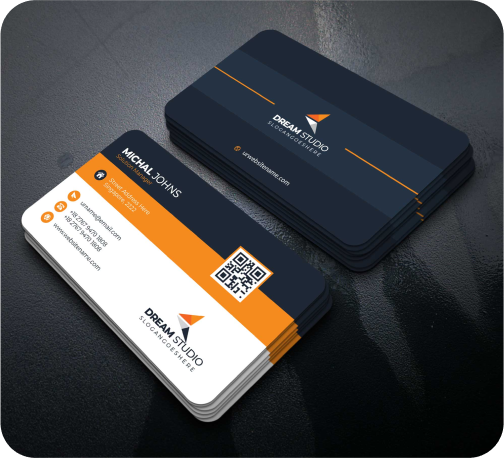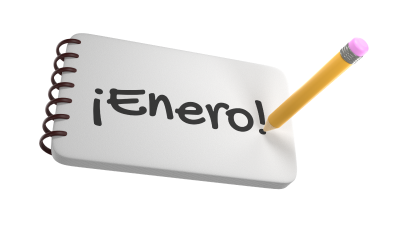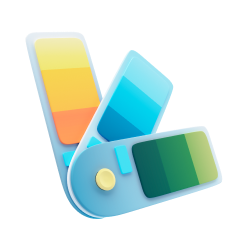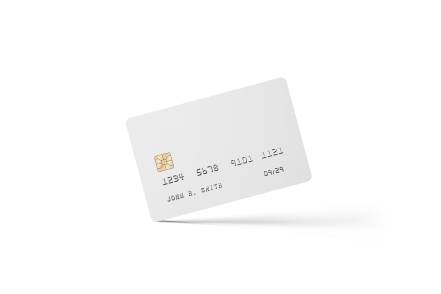How to Get a Modern Business Card Design A Comprehensive Guide
In today’s digital age, where emails and LinkedIn profiles often take center stage in business interactions, the traditional business card still holds significant value. Having a business card that is well-designed can make a lasting impression and even spark a conversation. But if you want to make a strong impression, it’s important to design your own business logo that showcases your brand’s unique identity and professionalism. Additionally, incorporating small business branding services can further enhance your brand’s presence and ensure consistency across all platforms. In this blog, we will walk you through the steps of creating a modern business card design. We’ll start by explaining design principles and then move on to selecting the appropriate materials and collaborating with designers.
Understanding the Importance of a Business Card
You must know why a business card is still important before you can begin to create one:
- Initial Impressions: People's initial impressions of your brand are often based on your business card.
- For networking purposes, it serves as a physical memory of your meeting, which aids in your subsequent memorization.
- Seriousness: A professionally designed card shows that you take your company seriously.
- The identity of a brand is a reflection of its image and ideals.

Key Elements of a Modern Business Card Design
Aesthetics and practicality should coexist on a contemporary business card. Take into account the following important factors:
1. Minimalist Design
Modernism is characterized by its minimalist aesthetic. The hallmarks of a minimalist business card design include clarity, simplicity, and emphasis on key details. Make the card seem professional and simple to read by using enough of white space.
2. Quality Materials
The substance you choose for your card may greatly influence how others see it. Your card might be eye-catching if it is made of high-quality paper, plastic, or metal. To make it more classy, think about using a matte, glossy, or textured surface.
3. Typography
In contemporary design, typography is vital. Pick typefaces that are simple, legible, and representative of your brand’s character. Refrain from employing more than two or three typefaces; one or two should be enough.
4. Color Scheme
These days, muted tones are the norm for business cards. Be sure there is sufficient contrast and that you stick to your brand’s colors so that the writing can be read. For an elegant appearance, try playing around with light hues and gradients.
5. Unique Shape and Size
Although 3.5 by 2 inches is the conventional size for a business card, playing around with other forms and sizes might help you stand out. An extra special touch may be achieved using square cards, rounded corners, or die-cut forms.
6. Special Finishes
Think of enhancing it with unique touches like spot UV coating, foil stamping, or embossing. These components may elevate the look and feel of your card while drawing attention to key features.
Take you
BUSINESS
to the Next Level
Steps to Getting a Modern Business Card Design
Step 1. Define Your Brand Identity
Establish your brand’s identity before you begin the design process. The design of your business card ought to complement that of your brand as a whole. Think on the color scheme, logo, font, and style of your brand.

Step 2. Gather Inspiration
Pinterest, design websites, and business card galleries are just a few places you might look for ideas. Keep an eye on current trends and make mental notes of the parts that speak to you. In doing so, you will be better able to convey your ideas to the designer.

Step 3. Choose a Design Tool or Designer
You may employ a professional designer, use free tools like Canva and Adobe Illustrator, or do it yourself if you have the time and money. If you want a unique, high-quality design, hiring a designer is your best bet.

Step 4. Focus on the Layout
Make sure all the necessary details are included in a clean arrangement. The standard components of a business card are:
- Your name and title
- Company name and logo
- Contact information (phone, email, website)
- Social media handles (if relevant)

Step 5. Select the Right Fonts
Stick to typefaces that represent your brand. Because of their simplicity and lack of embellishment, sans-serif typefaces are ideal for contemporary design. Make sure the font size is suitable and that the content is readable.

Step 6: Pick Your Colors Wisely
Make sure there is adequate contrast and that you stick to your brand’s colors. If the primary colors of your brand are very vivid or striking, you may want to think about using them as accents instead.

Step 7: Add a Unique Touch
Add something special, like a QR code, a memorable slogan, or a fascinating texture. Including these elements may give your card a more engaging and eye-catching appearance.

Step 8: Choose the Right Material
Pick a substance that exudes quality and feels nice to the touch. Paper, metal, recyclable plastic, and thick cardboard are all possibilities. The textures and finishes offered by each material are unique.

Step 9: Print a Test Batch
You should print a tiny sample to observe the design’s appearance before printing a big quantity. Verify the colors, make sure the text is readable, and assess the overall look. Feel free to make any required changes.
Step 10: Finalize and Print
Make sure to confirm your purchase with a reliable printing provider after you are pleased with the design and test batch. Verify that the printing and finishes they provide are of good quality.

Working with a Designer

A seamless procedure may be ensured by following these steps in the event that you choose to engage a professional designer:
1. Provide a Clear Brief
The designer should be provided with a comprehensive brief that includes your brand rules, preferred designs, and any unique suggestions that you may have. They will have a greater chance of comprehending your vision if you supply them with more details.
2. Review and Feedback
The first design drafts should be reviewed, and constructive input should be provided. Give concrete examples of what you appreciate and don’t like, and offer suggestions for ways in which it may be improved.
3. Collaborate and Iterate
The design process is one that is iterative. Working together with the designer, you should make adjustments to the design until it satisfies your requirements. Take your time with this procedure and make sure that every aspect is flawless.
4. Approve the Final Design
Give your final approval whenever you have reached a point where you are entirely satisfied with the design. Take the required steps to ensure that you obtain all of the files in the appropriate formats for printing.
Conclusion
A modern business card serves a greater purpose than simply being a piece of paper with your contact details. Design your own business logo to ensure that your business card reflects your brand’s identity and makes a strong impression. Your website is a reflection of your brand and serves as a tool to make a lasting impression. If you follow these steps, you’ll be able to create a business card that is stylish, professional, and uniquely yours. Whether you decide to design your business card yourself or collaborate with a professional, dedicating time and effort to the design process will undoubtedly yield positive results for your networking and small business branding services.
